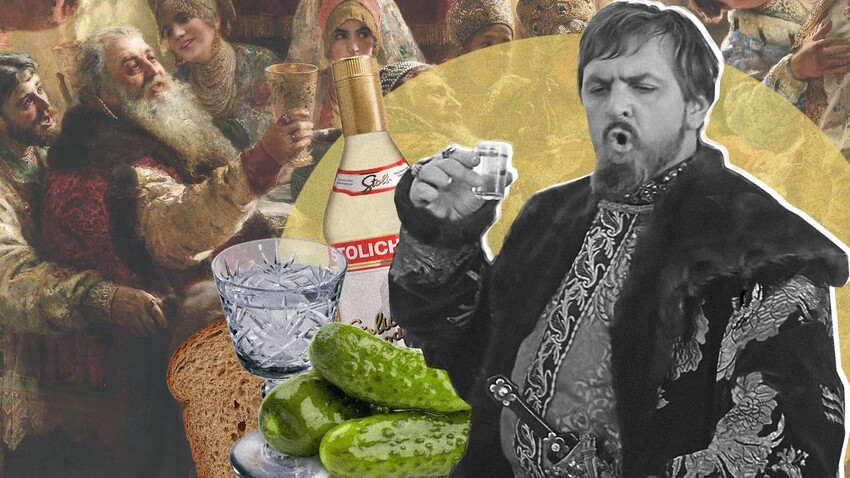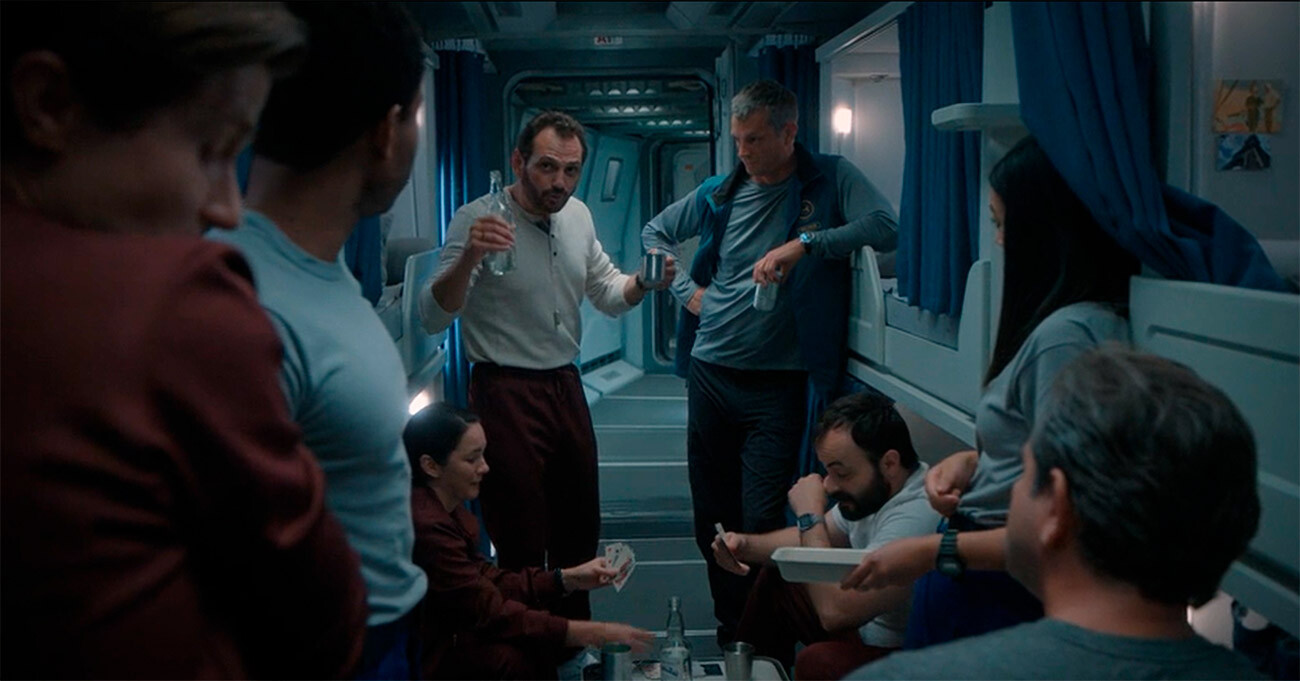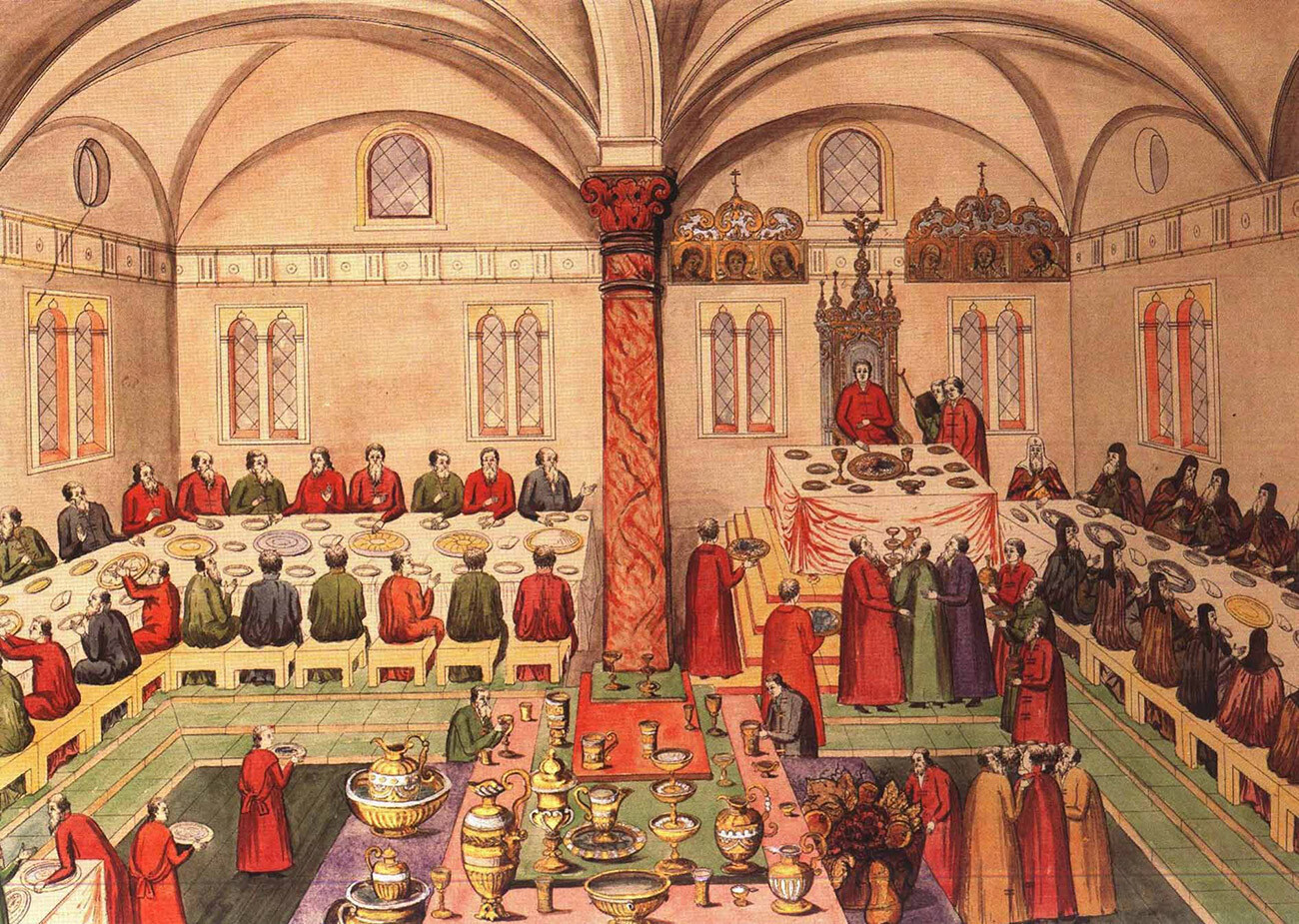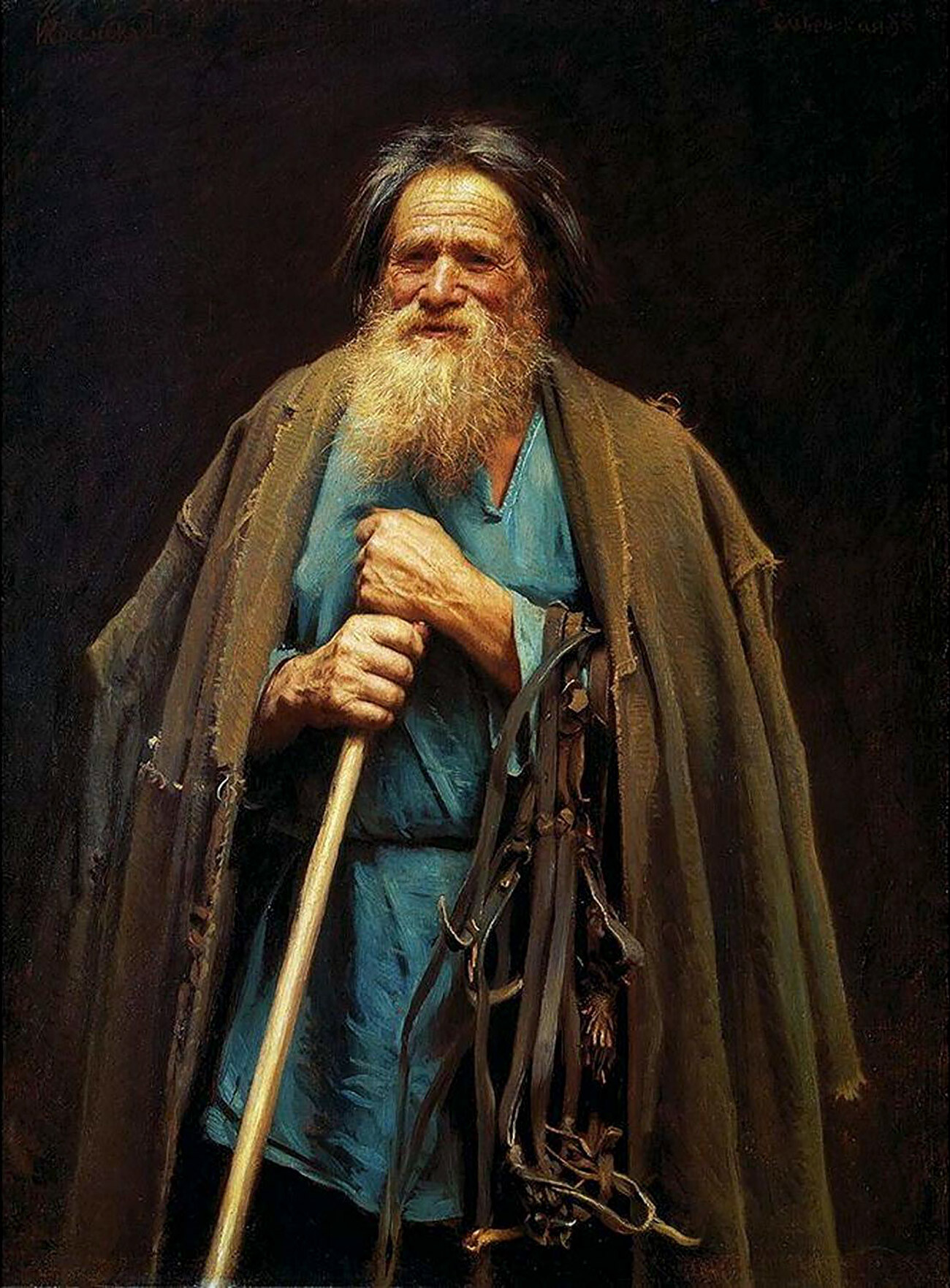
By the way, the real tsar Ivan the Terrible drank vodka on multiple recorded occasions.
Kira Lisitskaya (Photo: Leonid Gaidai/Mosfilm,1973; Konstantin Makovsky)In the alternative history of space exploration that is presented in the Apple+ TV show ‘For All Mankind’, S3E6, American and Soviet astronauts have a party at a research facility based on Mars. While everybody’s drinking, the head of the Soviet team says that Russian tsar Ivan the Fearsome (we’re assuming they mean Ivan the Terrible) had a tradition of drinking 10 toasts “for the road” or, as Russians say, “na pososhok”. Is it really true?

A still from "For All Mankind"
Ronald D. Moore; Matt Wolpert; Ben Nedivi/Tall Ship Productions; Sony Pictures Television, 2022No, he most likely didn’t.
During feasts in the presence of the tsar, historian Lyudmila Chernaya writes, a lot of toasts were pronounced. Except that, in Russia, they were not called ‘toast, but ‘zdravitsa’ – which can be translated from Russian as “a speech to one’s health”. The first toast (‘zdravitsa’) was pronounced soon after the beginning of the meal – and it was the toast that the tsar himself raised to his guests. “The guests went up to the royal throne, in the order of seniority, took the cup from the tsar’s hands and, stepping back a few steps, drained it and returned to their place,” is how Chernaya describes the ritual.
These toasts were compulsory for everyone present, even monks and priests. Refusing to drink the tsar’s health, historian Lidiya Sokolova writes, was an insult to the tsar’s greatness.

A feast in the Palace of Facets, Moscow Kremlin, a 16th-century drawing
Public domainAfter the first toast, more were pronounced – first, for the members of the tsar’s family, then for the Patriarch’s health and so on. Among these toasts, Lyudmila Chernaya writes, the tsar himself began raising toasts to the health of his guests, doing this from time to time. When the tsar toasted anyone’s health, the person stood up with his cup and drained it to the bottom. The feast ended with one last cup and a prayer. As a gesture of hospitality, the tsar could order several buckets of drinks left after the feast to be sent to the guests’ home in Moscow.

"A peasant with a bridle (Mina Moiseev)," by Ivan Kramskoy, 1882
Ivan KramskoyA popular list of ‘10 Russian toasts for the road’ that can be seen all over the Russian Internet, that includes drinking “for the saddle” and “after riding past the gate” – is probably a list made up by some contemporary journalist.
The most popular toasts in Russia are listed here. But what about the one for the road, that’s called ‘na pososhok’? The name of the toast can be translated as “one on the walking stick” and this, indeed, was a Russian tradition of the last toast before the guest leaves. Escorting the guest to the threshold, the last cup was offered to them, which tested the degree of the guest’s drunkenness – if the guest could drink a small shot glass placed on the upper end of his walking stick, then they were “good to go”, sober enough to get home or elsewhere. If he dropped the glass, then it was a sign that maybe the guest should stay the night.
Also, Russians don’t say ‘na zdorovie’ when toasting each other. Here’s why!
If using any of Russia Beyond's content, partly or in full, always provide an active hyperlink to the original material.
Subscribe
to our newsletter!
Get the week's best stories straight to your inbox